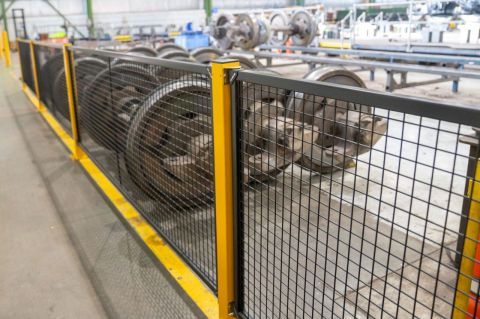Queensland Launches Targeted Safety Campaign to Reduce Workplace Injuries in Transport and Warehousing
Heavy vehicles and machinery can lead to serious injuries and work-related deaths. From April 2025, Workplace Health and Safety Queensland (WHSQ) will run a statewide safety campaign focusing on the transport and warehouse industry.
The campaign, primarily focused on mobile plant risks and forklifts, aims to address key safety requirements, including proper licensing, load limits, regular maintenance, and the implementation of effective traffic management plans in workplaces.
In an email issued on May 12, 2025, Sarina Wise, Executive Director of Workplace Health and Safety Queensland, emphasised the importance of workplaces having "practical, workable controls that cover all vehicles in the workplace, not just forklifts."
Wise also addressed the necessity of ensuring all workplaces have the correct forklift licensing, stating that "Inspectors can give on-the-spot fines if forklifts are used without the correct licensing."
The implementation of traffic management plans in the transport and warehouse industries represents an excellent starting point for comprehending the flow of movements throughout the workplace. However, well-designed engineering controls that physically segregate pedestrians from vehicles and hazards ensure a significantly higher level of workplace safety.
"Even skilled vehicle and machinery operators can't prevent accidents if the environment sets them up to fail. That's where traffic management plans, along with additional engineering controls, can play a crucial role," says Michael Hogan, a Barrier Group Site Safety Expert in Brisbane, Queensland. "It's about being proactive about safety in the way a site operates, not just reacting when something goes wrong."
Warehousing and Transport represent two of the six industries that account for 76% of work-related traumatic injury incidents and 61% of serious workers' compensation claims, according to SafeWork Australia (2024). To often, vehicle incidents contribute to the largest proportion of worker injuries.
As Hogan explains, each workplace has its own flow, including forklift paths, intersections and blind spots, no two plans should look the same. During his regular site visits and time spent with his valued Queensland clients, Hogan helps businesses implement and customise engineering controls that align with their existing traffic management plans.
Increasing Workplace and Pedestrian Safety with Engineering Controls
The concepts of design and efficiency hold significant importance for Barrier Group safety site consultants. Once traffic management plans are written and approved, the Barrier Group team get to work to make it visible and practical through the physical infrastructure.
"Engineering controls like guardrails, machinery guarding, swing gates, and bollards aren't just optional extras," says Hogan. "They're essential to reinforcing the rules and isolating people from potential hazards."
Strategically positioned infrastructure, including high-visibility guardrails in vehicle traffic zones; machine guarding to partition off hazardous areas of the environment; bollards at pedestrian choke points; and designated walkways secured by swing gates, eliminates ambiguity and proactively helps prevent incidents before they occur.
"Engineered controls do the heavy lifting," he adds. "When you design the site to eliminate confusion, you reduce the risk before it starts."
Barrier Group Site Safety Consultants collaborate directly with transport and warehousing facilities around Australia to evaluate site risks and recommend tailored physical safety solutions that support existing traffic management plans.
For more information or to schedule a free on-site assessment of your workplace, contact us today!
Trusted by Australia's Largest Brands for Workplace Safety Solutions. Shouldn't you be next?
Subscribe to stay connected with Barrier Group and discover cutting-edge safety solutions, updates, and industry insights!




